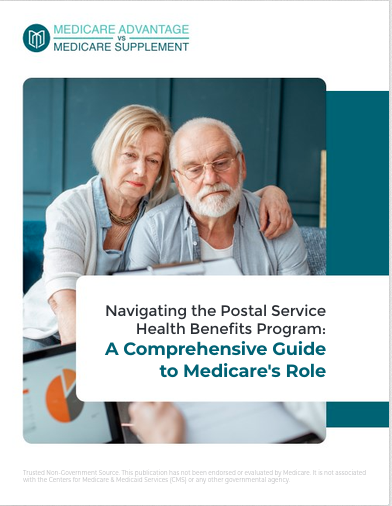Key Takeaways
- Medigap plans can fill coverage gaps in Original Medicare, potentially saving significant healthcare costs.
- Understanding the different Medigap plan types helps you make informed choices to maximize your savings.
Why Understanding Medigap Plan Types Could Save You a Lot of Money on Healthcare Costs
Healthcare costs in the U.S. continue to rise, making it increasingly important for seniors to seek financial protection beyond Original Medicare. Medigap, also known as Medicare Supplement Insurance, is a vital resource that can help cover costs that Original Medicare doesn’t, such as copayments, coinsurance, and deductibles. By understanding the different Medigap plan types, beneficiaries can save substantial amounts of money and avoid unexpected healthcare expenses. In this article, we’ll explore how the right Medigap plan could help you lower your healthcare costs in 2024 and beyond.
What is Medigap and How Does It Work?
Medigap plans are designed to work alongside Original Medicare, offering supplemental coverage that fills gaps in Medicare Parts A and B. For example, while Medicare Part A covers hospital stays and Part B handles outpatient services, Medigap helps with the out-of-pocket costs that can add up over time, like deductibles, coinsurance, and emergency medical care abroad.
The federal government standardizes Medigap policies, meaning each plan type offers the same basic benefits regardless of the insurance provider. However, the premium amounts and additional benefits may differ depending on where you live and the specific policy you choose. This makes it crucial for Medicare beneficiaries to thoroughly understand their options and select a Medigap plan that matches their healthcare needs and budget.
Different Medigap Plan Types: A Breakdown
There are several standardized Medigap plans labeled A through N, each offering different levels of coverage. While the specifics vary slightly, all plans help to lower out-of-pocket costs not covered by Original Medicare.
Medigap Plan A
Medigap Plan A is considered the most basic supplemental policy, covering coinsurance for hospital services and Part B expenses. While it offers a minimal safety net, it may not be the best option for those seeking more comprehensive coverage.
Medigap Plan B
Medigap Plan B adds coverage for Medicare Part A deductibles, making it more beneficial than Plan A. This plan is particularly useful for those who expect to have frequent hospital stays.
Medigap Plan C and F: Popular but Phasing Out
Plans C and F offer the most comprehensive coverage, including all deductibles and coinsurance costs. However, they have been phased out for new enrollees as of 2020. If you were eligible for Medicare before 2020, you can still enroll in these plans, but if you became eligible afterward, you’ll need to choose a different plan.
Medigap Plan G
Plan G has become the most popular option for new Medicare enrollees, as it covers nearly all the costs that Plan F once did, except for the Part B deductible. It’s ideal for those seeking broad coverage, especially for frequent medical services.
Medigap Plan K and L: Sharing Costs
Plans K and L work by covering a percentage of healthcare costs rather than the full amount. For instance, Plan K covers 50% of eligible expenses, while Plan L covers 75%. These plans are often chosen by individuals who prefer lower premiums and are willing to share more of the costs themselves.
Medigap Plan N
Plan N offers a middle-ground solution, covering most of what Plan G does, but with certain copayments for doctor visits and emergency room trips. This plan is an excellent choice for those who anticipate moderate healthcare needs but want to avoid higher premiums.
How to Choose the Right Medigap Plan for Your Needs
When choosing a Medigap plan, it’s crucial to assess your individual healthcare needs. Factors to consider include the frequency of doctor visits, hospital stays, and whether you travel abroad often. Here are a few practical tips to guide your decision:
Assess Your Current Health Needs
Evaluate your current medical condition, including any chronic diseases, ongoing treatments, or frequent doctor visits. For example, if you anticipate visiting your doctor often or requiring more intensive medical care, a comprehensive plan like Plan G might be the most cost-effective option.
Consider Your Budget
Premiums for Medigap plans can vary significantly based on location and provider. While it may be tempting to choose a plan with the lowest premiums, consider the trade-offs. Plans with lower premiums often require higher out-of-pocket costs when you need care. If you anticipate needing frequent medical attention, it may be more cost-effective to choose a plan with a higher premium but lower out-of-pocket expenses.
Think About Future Health Changes
While none of us can predict our future health with certainty, it’s worth considering any family history of illness or personal habits that may affect your healthcare needs down the road. Since Medigap plans cover long-term care, the plan you choose should be capable of supporting your potential healthcare needs as you age.
Factor in Travel Plans
If you travel internationally, it’s worth noting that some Medigap plans offer coverage for medical emergencies abroad. This is important for seniors who may spend part of the year living outside of the U.S. or who frequently travel. Plans like G and N are good options for international coverage, giving you peace of mind when traveling.
Medigap Enrollment: Timing is Critical
Once you’ve decided on a plan, it’s essential to know when to enroll. The best time to purchase a Medigap policy is during your Medigap Open Enrollment Period, which begins when you turn 65 and are enrolled in Medicare Part B. During this six-month period, insurance companies cannot deny you coverage or charge higher premiums due to any pre-existing health conditions.
After this window, you may face medical underwriting, meaning insurers can charge higher rates or deny coverage based on your health status. This makes it vital to plan ahead and secure the right Medigap policy while you’re still eligible for the open enrollment period.
The Cost-Saving Benefits of Medigap
Many seniors wonder whether purchasing a Medigap plan is worth the extra expense. However, Medigap’s ability to cover deductibles, copays, and coinsurance can lead to significant savings over time. Without Medigap coverage, even one unexpected hospital visit could result in substantial out-of-pocket costs.
For example, in 2024, Medicare Part A has a hospital deductible of over $1,600 per benefit period. Without supplemental coverage, beneficiaries would be responsible for this amount before Medicare begins paying. Medigap Plan G or N would cover this cost, reducing your financial burden and offering peace of mind.
Additionally, seniors with Medigap policies tend to avoid surprise bills and unexpected healthcare costs. With predictable monthly premiums, you can better manage your budget while maintaining access to the care you need.
Save by Avoiding High Out-of-Pocket Costs
Many beneficiaries make the mistake of assuming that Original Medicare alone will cover all their healthcare needs, only to find themselves responsible for significant out-of-pocket expenses. Whether it’s frequent visits to specialists, lengthy hospital stays, or costly diagnostic tests, these expenses can quickly add up. By opting for a Medigap plan that suits your needs, you can avoid these hidden costs and make healthcare more affordable.
Know Your Rights and Protections
Another essential aspect of Medigap is that, as long as you continue to pay your premiums, your Medigap policy is guaranteed renewable. This means the insurance company cannot cancel your coverage because of health changes, offering further peace of mind. Additionally, Medigap policies offer standardized protections, ensuring that no matter which company you purchase from, the benefits remain the same across the board.
Planning for Future Healthcare Costs
Understanding Medigap plan types is crucial for saving money on healthcare costs. Each plan offers distinct benefits, so evaluating your healthcare needs and budget is key. With the right Medigap coverage, you can prevent costly medical bills and maintain financial stability as you age.
Contact Information:
Email: [email protected]
Phone: 4805557890










